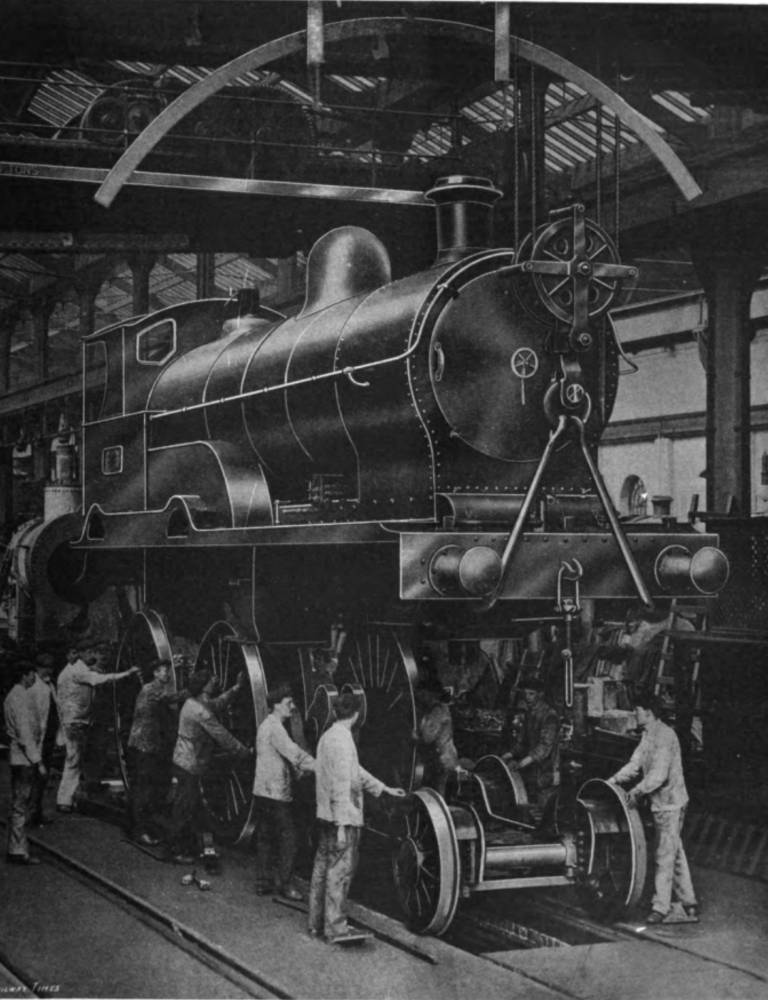
The London and North Western Coronation Engine from the 1911 Railway Times. [Click on image to enlarge it.]
Commentary from The Railway Times
In our issue of May 20 last we published reproductions from a remarkable series of photographs showing the rapidity with which a locomotive can be assembled when the various parts have all been prepared. The locomotive in question will be known as the “Coronation Engine," and it will be used to draw the Royal train to various towns which His Majesty will visit in connection with the Coronation ceremonies. “"e are now enabled to give a view of the engine as completed, together with the leading technical details of the locomotive. Before. proceeding to the latter, however, there are some interesting general points in connection with the Crewe‘works of the London and North Western Railway which may fittingly be noted on this occasion, as the “Coronation” is the 5,000th engine built in these works.
In the year 1843 the Grand Junction, afterwards-merged into the London and North Western Railway, established a factory at Crewe for building locomotives to work their line. The first engine constructed in their new works to haul the express passenger trains of those days weighed about 20 tons. The trains weighed about 40 tons, and ran at perhaps 25 to 30 miles per hour. The last engine turned out of the works weighs, with the tender, nearly 100 tons, and is expected to drag trains weighing 400 tons at a speed of 60 miles an hour.
Since its inception as a railway centre Crewe has kept well to the front in all matters appertaining to locomotive engineering, and, gaining experience with every new type of engine produced, has steadily progressed, developing and building locomotives of ever-increasing capacity.
Weight of engine in working order 59 tons 17 cwts [i.e. 1,700 pounds].
Tender, fitted with water “pick-up” apparatus ——
Water capacity 3,000 gallons
Coal capacity 7 tons
Weight in working order 39 tons 3 cwts.
Total weight of engine and tender in working order 99 tons 2 cwts.
Total length of engine and tender over the buffers 56 feet 7 inches.
Total wheel base of engine and tender 47 feet 2 1/2 inches.


Left: Fixing on the Steam Dome. Right: Testing the motion. [Click on images to enlarge them.]


Left: The Coronation Engine ready for Tender. Right: Testing the motion. [Click on images to enlarge them.]
You may use these images without prior permission for any scholarly or educational purpose as long as you (1) credit the Hathi Trust and Cornell University and (2) link your document to this URL in a web document or cite the Victorian Web in a print one.
Bibliography
“Coronation Engine”. The Railway Times. (May 20 & 24 June 1911): 402, 483. Hathi Trust online version of a copy in the Cornell University Library. Web. 7 September 2018.
“The L. and N.W. Coronation Engine”. The Railway Times. (24 June 1911): 601. Hathi Trust online version of a copy in the Cornell University Library. Web. 7 September 2018.
Last modified 7 September 2018